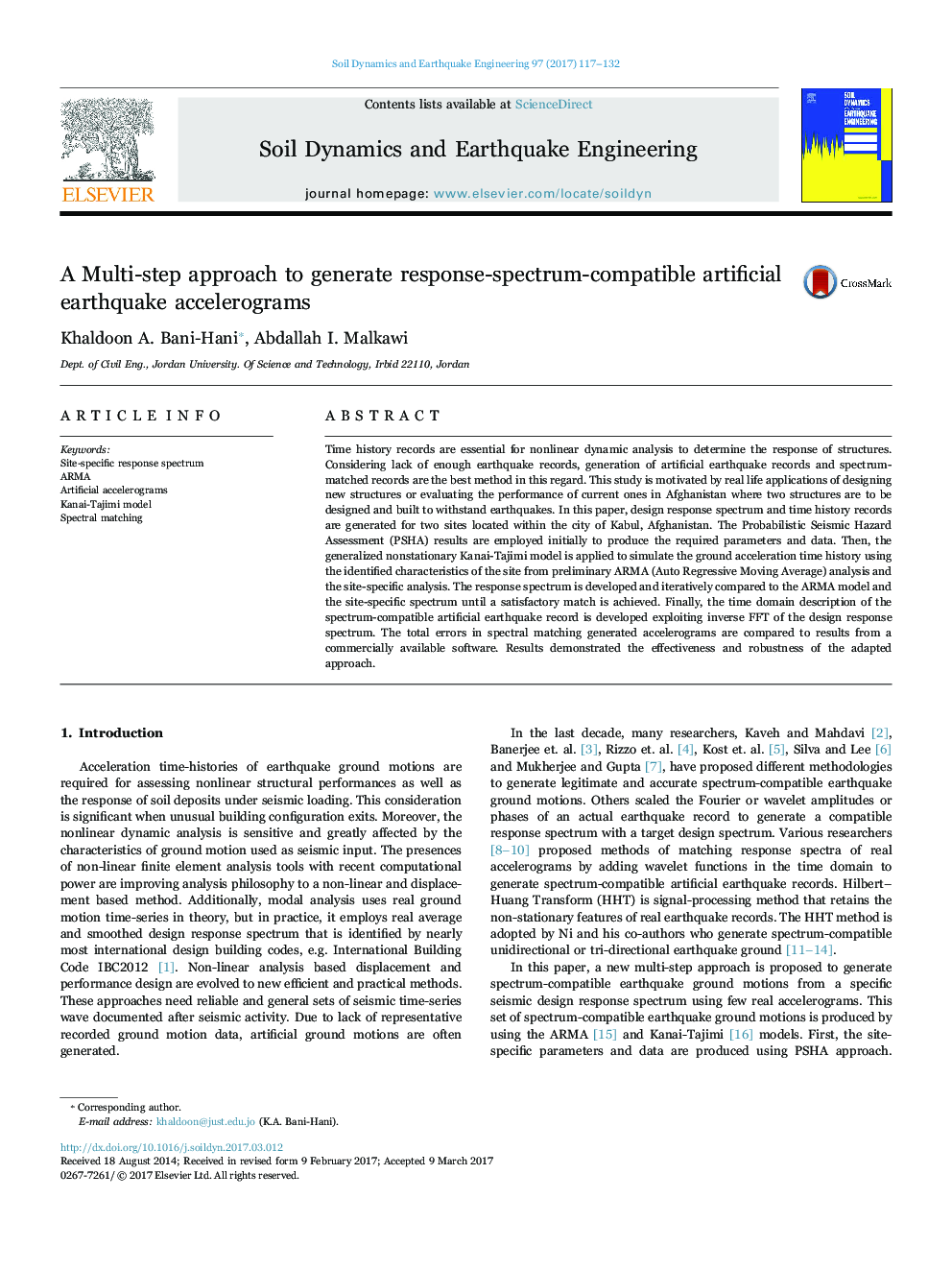| Article ID | Journal | Published Year | Pages | File Type |
|---|---|---|---|---|
| 4927115 | Soil Dynamics and Earthquake Engineering | 2017 | 16 Pages |
Abstract
Time history records are essential for nonlinear dynamic analysis to determine the response of structures. Considering lack of enough earthquake records, generation of artificial earthquake records and spectrum-matched records are the best method in this regard. This study is motivated by real life applications of designing new structures or evaluating the performance of current ones in Afghanistan where two structures are to be designed and built to withstand earthquakes. In this paper, design response spectrum and time history records are generated for two sites located within the city of Kabul, Afghanistan. The Probabilistic Seismic Hazard Assessment (PSHA) results are employed initially to produce the required parameters and data. Then, the generalized nonstationary Kanai-Tajimi model is applied to simulate the ground acceleration time history using the identified characteristics of the site from preliminary ARMA (Auto Regressive Moving Average) analysis and the site-specific analysis. The response spectrum is developed and iteratively compared to the ARMA model and the site-specific spectrum until a satisfactory match is achieved. Finally, the time domain description of the spectrum-compatible artificial earthquake record is developed exploiting inverse FFT of the design response spectrum. The total errors in spectral matching generated accelerograms are compared to results from a commercially available software. Results demonstrated the effectiveness and robustness of the adapted approach.
Related Topics
Physical Sciences and Engineering
Earth and Planetary Sciences
Geotechnical Engineering and Engineering Geology
Authors
Khaldoon A. Bani-Hani, Abdallah I. Malkawi,
